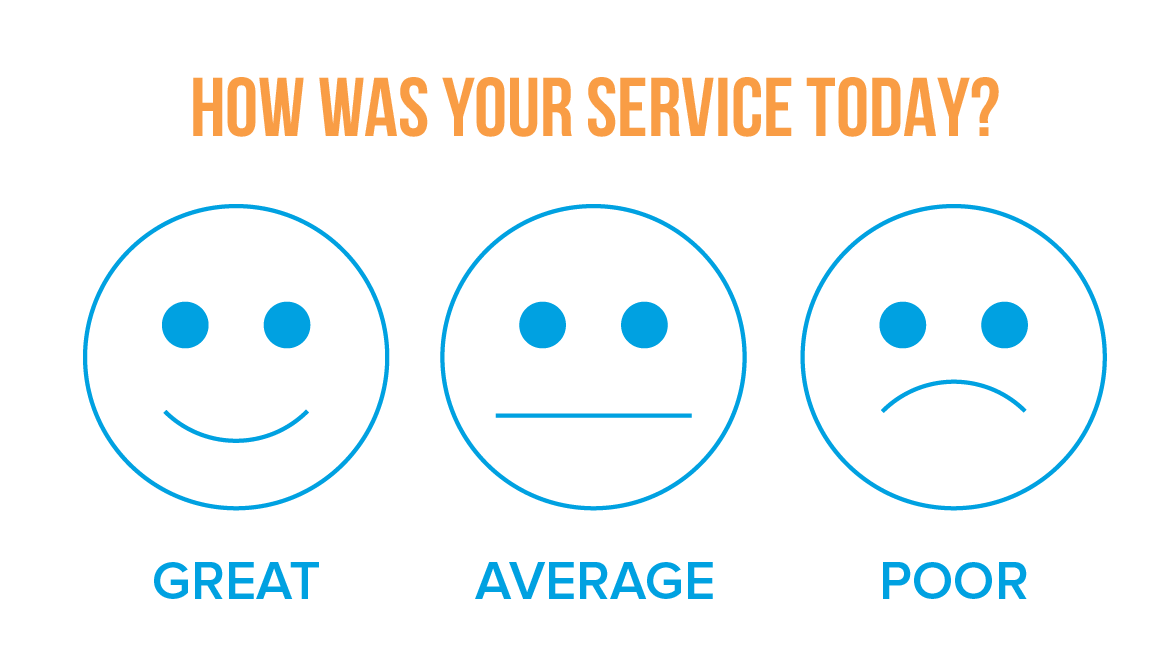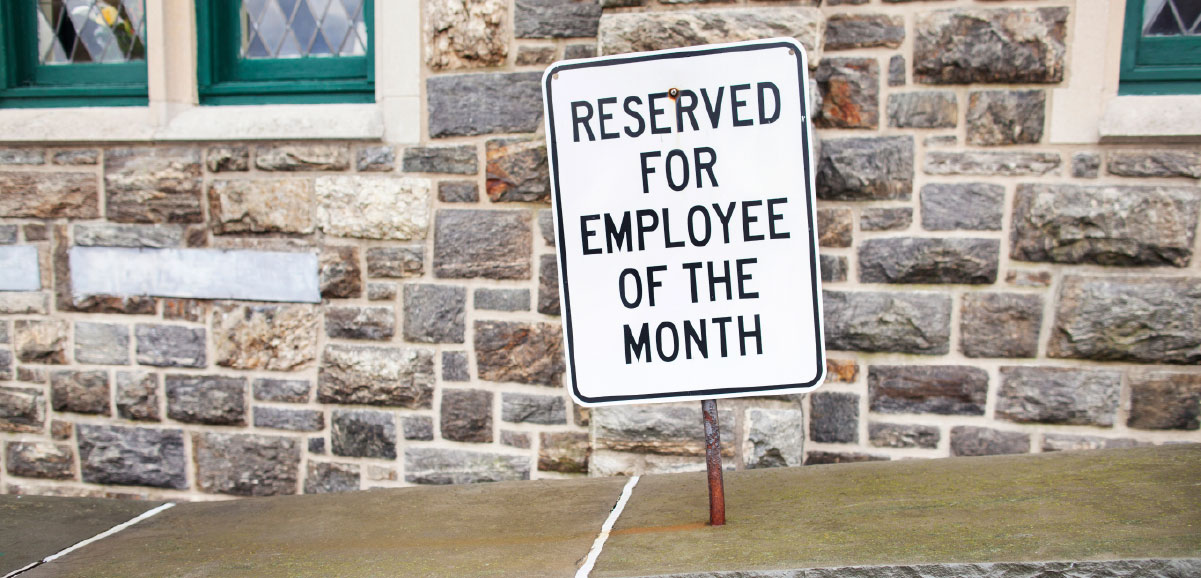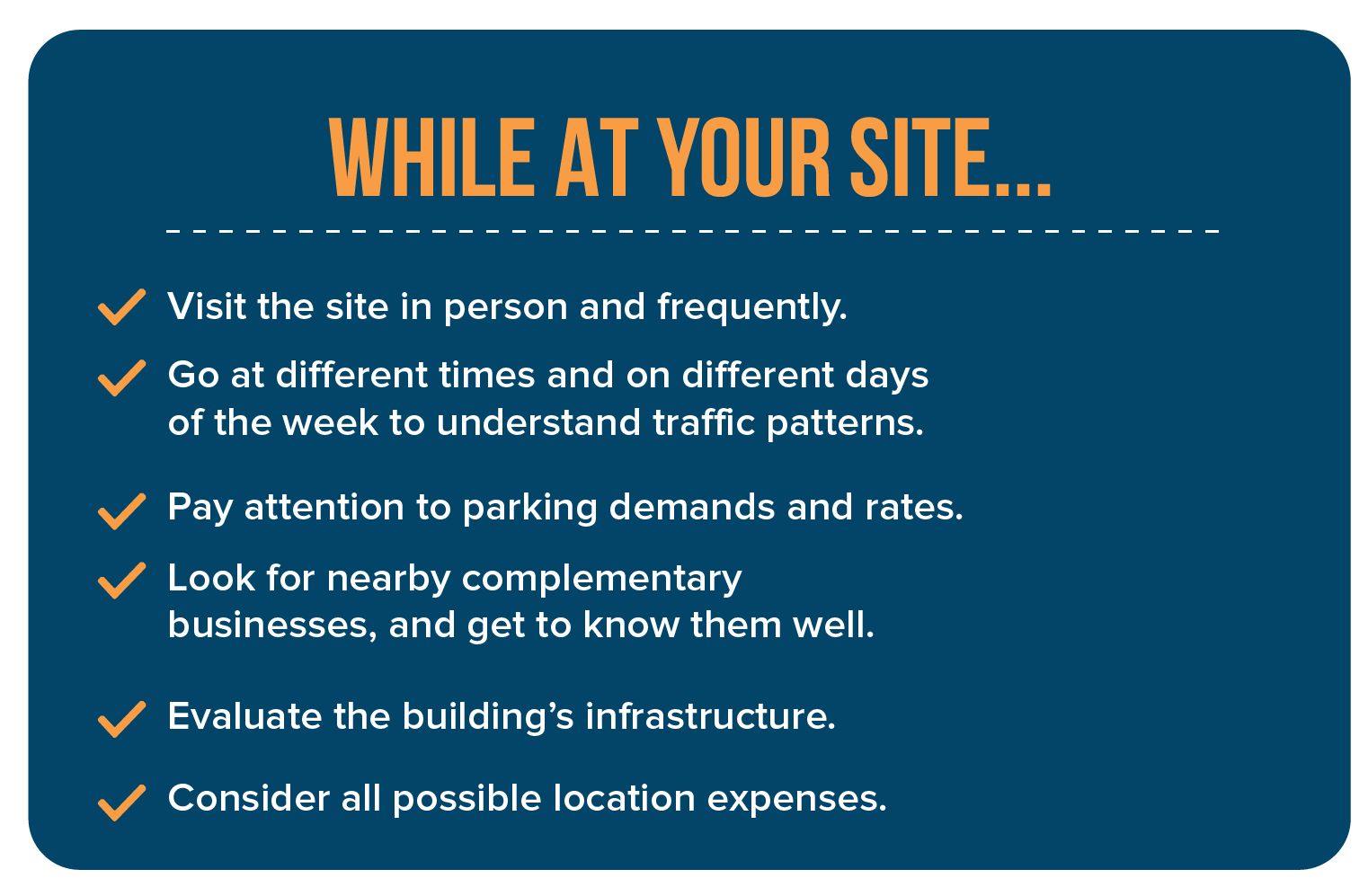“It is the set of sails, not the direction of the wind that determines which way we will go.” – Jim Rohn
Does your business have a sound strategy for determining your next location? If you’re considering expansion plans to increase your revenue stream, you must build a plan that requires discipline, market research, and of course, passion – the main reason you fell in love with your business to begin with.
1. Expand at the right time and for the right reasons.

First, while the temptation to expand for competitive or growth reasons may drive your next location, make sure you’ve evaluated your motivations. “The decision to expand is sometimes driven by the wrong reasons,” says Juan Alcácer, Associate Professor of Strategy at Harvard Business School. “In many cases, companies are not thinking of the long-term consequences of what they are doing.” Alcácer continues, “Companies often blindly follow their rivals from city to city or country to country without analyzing whether that same situation is right for them…. They are realizing that they were not well prepared for the market or that it wasn’t the right market for them.” Many companies such as Crumbs Bake Shop, Wise Acre, and XciteLogic were too late when they made this realization.
Before you jump into the expansion game, consider all the factors that could impact your current business if you open a new location – resources, budget, timing, unknowns, and the goals for expansion. “When you open a new operation, it requires not only money, but also the time and energy of managers to make sure it’s going the right way.” Says Alcácer. Walmart provides a good example of choosing the right time and reasons to expand. In the early 60s, Walmart’s initial growth strategy was slow and methodical, only opening stores near local mom and pop shops. But, it was years later when they felt they had built enough resources to begin opening stores near bigger competitors like Kmart.
2. Start with a plan when choosing your location.

Now that you’re fully confident your business is ready for your next location, start creating your visual plan on a mind map so that you can see all the variables and considerations when choosing a new location. Faisal Hoque writes in a Fast Company article: “By mapping our decision-making process, we can see what our assumptions are and where they might go wrong, and when they go wrong, we can find the incongruence between our perception of reality and the way it actually is.” Mind mapping tools can be as simple as a whiteboard or free software you can find online, but there are some other others with more advanced features.
Next, add to your mind map all the considerations listed in the following guide so you can create your game plan for addressing every variable, including risks, timeframes, resources and budget.
3. Know your business.
“Do your homework and know your business better than anyone. Otherwise, someone who knows more and works harder will kick your ass.” – Mark Cuban
When choosing your next location, do the extra research to first understand why people are coming to your current location(s). In the best selling book and Ted Talk, Start with Why: How Great Leaders Inspire Everyone to Take Action, organizations always look at what they do and how they do it, but they rarely go deeper to understand the why – the true purpose and belief for why their business exists. Once you know what your “why” is, you will build a business and brand that will dictate your growth plan and goals. Even more, you will understand who your best customers are and what motivates them. And those best customers are where you next location needs to be.

An alternative best practice is to understand what the top brands with multiple locations are doing (Apple, Patagonia, Starbucks, Harley Davidson, and Nike). They emulate and personify one of the 12 brand archetypes of their target customers’ core desires, hopes, fears, and motivations. If you know your business’s brand archetype (and thus customer archetype) then you’ll be one step closer to selecting your location. For example, if your brand is a “rebel archetype”, where contrarians and rule-breaking mindsets prevail, consider an area close to where the rebel-types live such as a location and building that’s more urban and industrial, including areas that have a high concentration of stores targeting this same archetype.

Once you know your business “why” and brand archetype for helping you define your location, create an additional wish-list of what you don’t have at your current location(s) that would improve your business (you could even survey your customers as referenced in the below tip). Consider performance improvements other than revenue, like employee recruiting and retention as well as customer experience.
4. Know your customers.
Knowing your business goes hand in hand with knowing your customers. The easiest method to determine your next location is to simply ask your current customers. Whether it’s a simple 3 question paper survey they receive while they are making a business transaction or an email survey, give them a list of your top 5 locations you’re considering and ask them to rank the location they feel would be most successful from a customer and business growth perspective. Be sure to leave an open-ended section at the end of the survey so they can provide you with additional ideas you may not have considered.

Doing customer market research is another critical tactic. The idea of “location, location, location” is a dead concept. Kathleen Rose, CCIM writes in Retail Location Strategies, “Market, market, market is a more-appropriate concept for the future as retailers and developers alike ask not “Is this a good location,” but rather “Is this the best location in the market, given the competition?” (More on competition on tip #6.) With all market research, understanding the demographic of your target customers is one of the top factors when determining your next location. As the above brand archetype exercise helps to understand your brand and target customer, a deeper dive into where the majority of those customers shop and/or reside will require some additional research and analysis. For your new location, consider researching U.S. census data, median household income, buyer preferences, lifestyle habits, behavior data, and traffic patterns of your customers. As mentioned above, it’s easiest to start this by research by surveying your current customers or you can research online sites such as government sources and free demographic tools like ZoomProspector and City-Data.com. Additional tools for customer market research can be found in this Hubspot article.
5. Know your best employees.

Just like how you conducted the research to understand the demographics of your target customer for your next location, it’s critical to do the same exercise for your star employees. Most of your best employees are good for a reason. Understand what those top qualities are and search for a location that’s close to where that similar employee demographic lives. The DISC assessment is a widely used personality and behavior assessment that will help you understand the disposition and priorities of your best employees. The Four DISC types are Dominant, Inspiring, Supporting, and Cautious. Personality types tend to gravitate to certain job roles where they are most successful. For example, many successful salespeople fall in the “D” or “I” types who are outgoing, task-oriented, competitive, and driven by rewards (e.g. money). Therefore, when choosing your next location, look for an area where these motivated professionals live or within a commutable distance to your new location.

Many successful companies such as General Electric, Boeing, and Marriott are also placing high emphasis on the local labor market in determining their next location and relocating their headquarters. The trending increase of the younger and younger workforce and a preference for a more urban lifestyle are playing a larger role in this shift. In a recent AreaDevelopment article, Dean J. Uminski Principal of Crowe Horwath writes, “Much of the recent migration of corporate headquarters to urban areas is tied to employee recruitment. Companies believe they are better positioned to uncover and draw top talent — especially millennial talent — when they are based in major cities.” Many business are considering these more compact urban spaces near public transportation and several more are opening locations near high schools and colleges to recruit top talent as recently reported by the Top Challenges for U.S. Businesses with Hourly Workers Survey.
6. Know your competition.

“If you know the enemy better than you know yourself, the outcome of the battle has already been decided.” -Sun Tzu
Most businesses keep an eye on competition but when it’s time to choose a location for your growing business, take the time to do an extra deep dive on your top competitors to understand their current growth strategies. A simple competitive SWOT analysis could give you the extra insight you need to ensure you make the best decision for your location and mitigate competitive threats in your expansion strategy. This Competitive SWOT Analysis Edge article explains a good process for conducting your SWOT analysis including identifying your major competitors, reviewing their social media activities, signing up for their blogs/emails/newsletters, and reviewing their recent press. There are also some additional online tools to research your competitors. Next, identify your business’s and your competitors’ strengths and weaknesses and determine what main action items you will take (and learn) from conducting this SWOT analysis, which in this case will be how this will affect your location selection.
As previously mentioned, surveying your customers is another great method to find out more about your competitors. As a best practice, Deputy assigns one competitor to each sales rep to become the subject matter expert of their assigned competitor, consistently keeping the team and competitive matrix updated on business strategies and product/service enhancements. This includes paying close attention to failures your competition has made as this is especially important for your next location. If your competitor opened a location that closed, ask the neighboring businesses or the leasing agent if they can provide any insight on it’s closure.
One widely used best practice is businesses opening locations near their competitors to capture maximum market share for their target customer as it has a better chance of success than being somewhere less known to customers. This tactic applies to industries where your customers do comparison shopping. The size of your business, target market size, and demographic also play a key role for that model’s success. This approach can also save you a lot of time, money and resources in the researching if your competitor is known to be savvy, big spenders in market research. A great example of this is Home Depot as they had a proven successful site selection strategy, investing heavily in predictive analytics and market research. Lowe’s site selection strategy was easy – they simply opened up a location adjacent to the Home Depot’s new location.
7. Know your laws.

Be sure to consider Uncle Sam in choosing the next location for your business. There are plenty of zoning regulations and ordinances to consider and your local planning agency can help ensure your new location is up to code. More important, make sure the new location’s ordinances don’t prevent you from running the business you want. For example, some cities have ordinances that restrict the size of your outdoor signs or laws for exterior paint colors which could impact the brand you want to convey. Additionally, there could be parking regulations that could hurt your customer’s shopping experience and mixed use ordinances that could contradict your business (like a liquor store if you’re a church).
With all budget planning – taxes, labor wages, and health care costs, differ by state and can directly impact your profit margins. Understand your property taxes as well as the sales and income taxes for your new location. From a labor standpoint, while the federal minimum wage is $7.25 an hour, in many states that’s higher so be sure to check the the hourly wage of the hourly employee per state, city and county. Health and unemployment insurance as well as workers’ compensation costs vary from state to state so be sure to consider all factors when selecting your next location.
As a perk, your new location might also be qualified for for state-specific tax credits, business incentives, grants, and loans so spend some time researching the opportunities available that can affect your bottom line.
8. Know your new location… No, really know it… before signing any agreement… (i.e. why this is a hefty tip).

When you’re on the search for the best location, always start with a top notch real estate agent who understands the market and location you’re considering. Look for a proven track record and ask for their current listings and business references (similar to your business model). If you’re considering a few different areas, then find the best agent who specializes in each area.
As you narrow down your locations to your final two, this is the time to be exhaustive in researching your final selection. First, find out how successful (or lack thereof) that last company performed in that location and be sure to ask neighboring businesses. If several have gone out of business or moved over the past 5-10 years, there’s a high likelihood your business could do the same as customers in that area might presume your business will fail like the others and not want to spend their time and money evaluating your new location (i.e. a customer herd mentality).
The best research as you get close to making a final decision is to visit the site in person, and frequently. From a customer perspective, be sure to go at different times of the day and at different days of the week to understand the traffic patterns of that area. Pay attention to potential issues like parking demands and parking rates as this could potentially deter your customers.

While at your site, look for nearby businesses that are complementary to you and get to know them well. This could pull more customer traffic if you’re targeting the same type of customer and provide a good source of lead exchange and networking opportunities with your customers, employees, and your suppliers.
While at your site, evaluate the building’s infrastructure as it’s current state may not be able to adequately support your growth goals. For example, if your brand archetype is “creators” (targeting the unique, innovative, early adopter customers) your building might have old utilities or telecommunications that won’t be able to support the high-tech (fast wi-fi), innovative brand you want to convey.
Additionally, consider all possible location expenses you may not have considered that might impact your budget. If utilities and janitorial services are not included in your lease, find out what the previous year’s janitorial and utility bills were so you can get a better understanding of what your expected monthly rates will be. Also, when visiting your new location (and while walking through your site) this is also a good time to think through any additional items you may not have considered in your new location’s budget like decor, appliances requirements for your employees, and adequate storage space. Be sure you also sharpen your negotiating skills and have a great broker who can negotiate items like your per square foot rate, the length of the agreement, out clauses, and improvements to the location before making a final decision.
Lastly, before signing an agreement for the new location, and if you are still worried about it’s chances of success, do a test run of your business near that location without the heavy upfront investment. Consider negotiating a small booth at a neighboring business to that location, rent a kiosk at a nearby shopping mall, or rent a food or services truck and park near that location (be sure to get proper licenses and permits).
9. Know the technologies that can help you.

If you have the budget to do it, consider a data-driven approach to selecting the best location for your business. Instead of spending the time scouting out your location, counting traffic, manually pulling demographics, and attempting to glean actionable insight to determine your next best location, you can aggregate most of your parameters in just a click. Many companies use geographic information systems (GIS) and other software programs as it provides online mapping reports that pull data on demographics, competition, transportation, real estate, and much more.
In a recent Fast Company article, Starbucks uses Atlas, an in-house business intelligence platform and mapping tool to determine their next location. It analyzes nearby companies, demographics, public transportation, and smartphone users. Wendy’s also uses GIS platforms to determine which urban downtown blocks have the highest foot traffic. Location predictive analytics solutions like Tango and Esri aggregate data from hundreds of different sources into thousands of variables that can be custom tailored to each business, even predicting sales volumes in the location. Costs for these types of site selection programs can can start around $2,500 annually but can run into six figure spends when the software is tailored to a specific business.
The caveat is all data-driven site selection software has limitations as it can’t explain what we as business-owners know based on our instincts and expertise. In a Boston Globe article on site-selection software, Chief Executive, Marla Beck of Bluemercury, a retail chain in Washington, D.C. explains, “As with just about everything, it’s about science and art,” Beck said. “You’re trying to take away some of the art and not rely 100 percent on the science.”
But, if science and data-driven approaches for location scouting are not your forte or out of your budget, consider working with a business consultant in your industry that can help you find the best technology at the right price point.
10. Know how to build a marketing strategy for your new location’s success.

This may not be an applicable tip for this guide, but it’s critical so worth the read. Once you’ve selected your next location and are gearing up for the big opening day, the best practice to ensure success is to build a powerful marketing strategy and execute it before, your opening day. Consider all options when promoting your new location and be sure to get your customers, suppliers/partners, employees, family and friends involved.
Depending (once again) on your customer archetype, create a compelling “ribbon-cutting ceremony” campaign for your opening day. This campaign can include email, direct mail, blogs, social media, press, and advertising – all pointing to a landing page on your website that highlights this event with a big promotion or discount for visiting your new location.
Advertise in both local publications (that your target customers read) and online paid search channels such as Facebook ads with location targeting and Google Adwords targeting both demographics and geographic location. As mentioned earlier in the guide, be sure to network early in the process with your new location’s neighboring businesses, so by this time they know you enough to help promote your new location (like putting your flyer in their store or banner ad on their website) or providing some local best practices they used to promote their business. Lastly, be sure to get your new location’s top community influencers and local bloggers involved as they can create even more buzz to draw more business.

We wish you the best of luck selecting the best location for your growing business. But you won’t need luck – taking the time to create a sound strategy and doing the above research will guarantee your business will be positioned for success. A final note – since you are a growing business, you will require more employees for your new location. The management of those employees will grow increasingly complex, especially with scheduling employees in multiple locations, accurately tracking their time and payroll, and communicating with your remote staff.
As the ultimate workforce manager for businesses with multiple locations, Deputy simplifies employee scheduling, timesheets, tasking and other employee communication – all with the power of a simple mobile app.

With the scheduling feature, you can create the most optimized schedule for your locations in seconds and publish it to your remote employees with just a tap.
Deputy’s time and attendance feature enables your staff to clock in and out via their smartphones or an iPad kiosk app at your location. This powerful tool includes options for geo-tracking and photo facial detection to address compliance and prevent buddy punching. These timesheets are then instantly synced to your payroll provider.
With Deputy’s tasking feature, you’ll be able to create and assign tasks to your employees at different locations and instantly get notified via push notification when they are complete.
Another Deputy app feature, News Feed enables seamless communication to all your employees at your different locations. Attachments can be added with confirmation, enabling businesses to drive compliance by ensuring important information is both communicated and received.
Lastly, Deputy’s performance management feature allows you to journal employee performance in real time for more frequent performance discussions yielding better employee engagement and retention.
Deputy equips business owners and managers with the tools they need to better manage their employees and grow their business. More than 30,000 customers in 73 countries use Deputy to manage their employees. For more information or for a free 30-day trial, visit Deputy.com.
